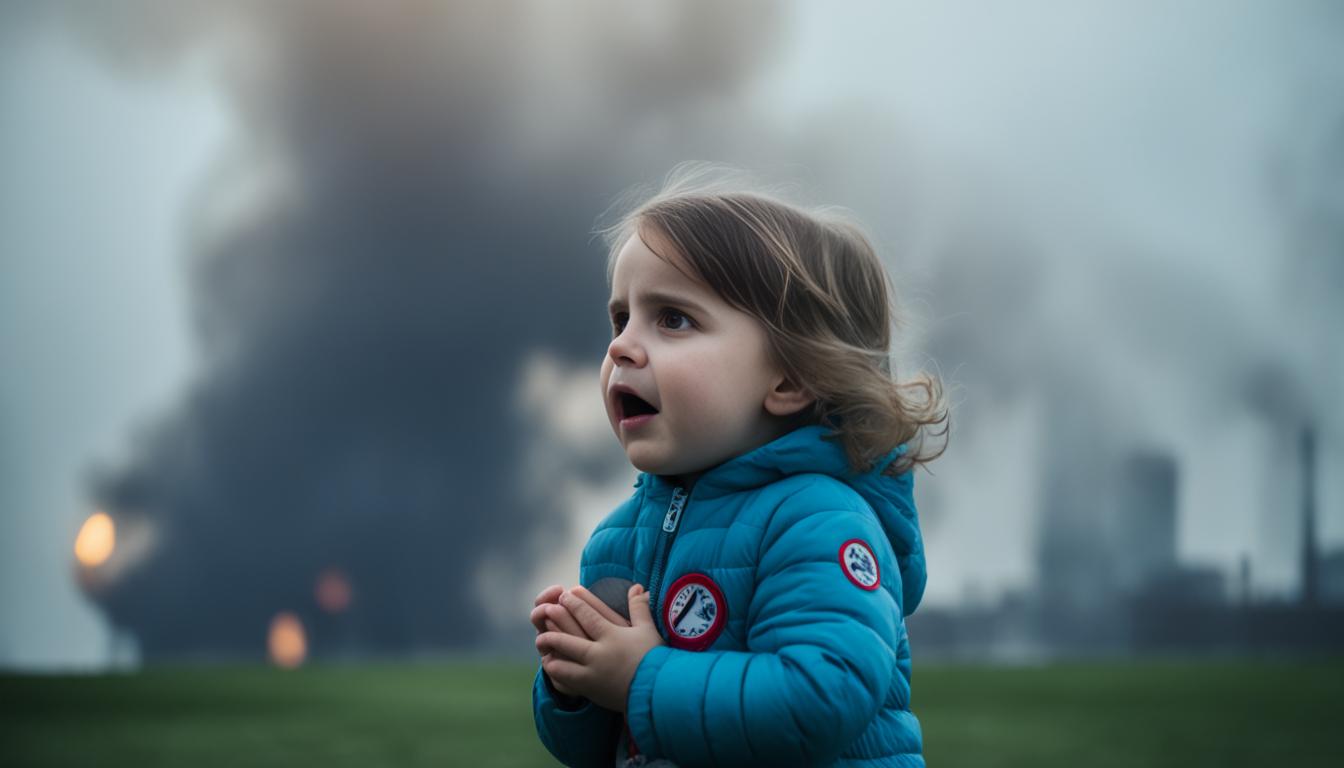Childhood asthma is a long-lasting condition that affects the airways. It causes them to swell and makes it hard to breathe. Kids with asthma often experience wheezing, chest tightness, fast breathing, a lingering cough, and speaking trouble. Many things, like infections, dust, animal fur, and pollution, can trigger asthma attacks.
Doctors are not sure about the exact reasons for childhood asthma. However, they think a mix of family history and the environment play a big role. To find out if a child has asthma, doctors use tests like spirometry, check exhales for nitric oxide, and do challenge tests. This is important because an early asthma diagnosis helps a lot in managing the condition.
Key Takeaways:
- Symptoms of childhood asthma include wheezing, tightness in the chest, rapid breathing, persistent coughing, and difficulty in talking.
- Environmental triggers such as respiratory infections, dust, pet dander, pollution, and allergies can cause asthma attacks in children.
- The causes of childhood asthma are believed to be a combination of genetic and environmental factors.
- Diagnosis of childhood asthma can be done through tests like spirometry, exhaled nitric oxide, and challenge tests.
- Early diagnosis is crucial for effective management of childhood asthma.
Pediatric Asthma Treatment and Management
The goal of treating pediatric asthma is to keep its symptoms in check. Caregivers use various methods to help children control their asthma.
Medication Options
Medicine is key in managing asthma and avoiding sudden attacks. There are two main kinds of medications: those for daily use and quick-relief drugs.
Medicines taken every day, like inhaled steroids, reduce swelling in the airways. This makes asthma symptoms less likely. But besides these, doctors might also recommend other types based on what each child needs.
Quick-relief meds, or rescue inhalers, help open airways fast during attacks. Drugs like albuterol are used for this. It’s vital that kids always have their rescue inhalers with them.
Parents need to know how to use their child’s asthma medications correctly. Using the inhaler right and sticking to the medicine plan are very important for controlling asthma.
Trigger Management
Avoiding things that make asthma worse is critical. Common triggers are allergens, illness, smoke, pollutants, and activity.
We can lower the trigger exposure by:
- Keeping homes clean to remove dust and allergens
- Using special bedding and covers to block allergens
- Having good ventilation to cut down on indoor pollution
- Staying away from secondhand smoke
- Regularly washing hands and taking care of hygiene
- Getting the flu shot to prevent infections
- Making sure schools are clean and have good air
Asthma Action Plan
Creating an asthma action plan with a doctor is crucial. It helps manage asthma daily and offers steps to follow during an attack.
This plan usually includes:
- Avoiding triggers and how to do it
- When and how to take asthma medications
- Proper use of inhalers and other devices
- How to tell if asthma is getting worse at home
- What to do during an attack, and when to get emergency help
Following this action plan helps parents, caregivers, and kids deal with asthma well.
Stem Cell Therapy for Childhood Asthma
Stem cell therapy is a new area showing hope in treating childhood asthma. Studies show stem cells can repair lung damage. These cells, especially mesenchymal stem cells (MSCs), from sources like umbilical cord blood and bone marrow are doing well in tests. They can change the immune system, lessen swelling, and help fix tissues.
But, we need more studies to check if stem cell therapy is safe and really works for asthma in kids. Right now, there are clinical trials looking into this treatment. This new way of treating asthma needs more work before it can be used widely.
Yet, the idea of using stem cell therapy for childhood asthma is very exciting. It might change how we treat this long-lasting illness. Researchers and doctors want to use the power of stem cells to give better care that focuses on the problem more directly. With more research, we hope to see better results in kids with asthma. This could mean a better future for those living with breathing issues.

